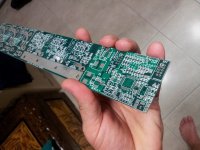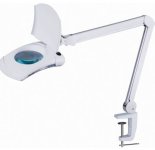When talking about DC link capacitors, you want high ripple current capability. Usually, with aluminium electrolytic capacitors, this comes with high capacitance values, but a controller really only needs very little capacitance compared to the amount the electrolytic types provide. The better choice would be film capacitors, they have much higher ripple current ratings, and are lower capacitance values, but comes at a much higher cost. So the economic way it to parallel electrolytic caps to increase their collective ripple current capability, but this also increases capacitance to a level where it does nothing for the controller, but it doesn't harm either (except for sparks when connecting the battery, use an anti-spark circuit to prevent this).
The smaller film capacitor is not for DC link, it's for another purpose, I don't fully understand this, but it has something to do with some spikes generated by the MOSFET switching.
With 80V target voltage, you want 100V or above capacitors. The 10mm diameter really limits the possible ripple current rating, I cannot easily find any with more than 1A ripple current, like this one:
http://www.digikey.com/product-detail/en/EKYB101ELL121MJ25S/565-4014-ND/4843824
1A don't seem like a lot to me but Lebowski can manage with a total of 1.5A from one cap in his controller. Why 1A does not seem much to me is because if you do the math, the ripple current is huge. What is the inductance of the target motor? 25µH? I don't know if that is a good guess, but with 80V battery voltage, 21kHz PWM and 25µH motor inductance, the RMS ripple current would be 27A! I'm sure this is only a theoretical number, otherwise most controllers would burn caps all the time. The math is from HighHopes, but I think it is a worst case ripple current, or it is the ripple current inside the controller, but since the current doesn't really stop flowing from the battery, the capacitor does not see all this ripple current, only the part the battery can't supply. That is just my personal theory






